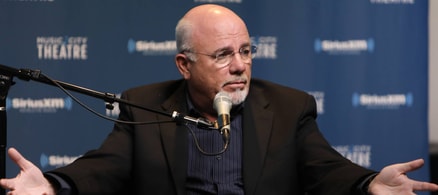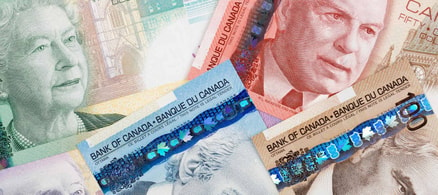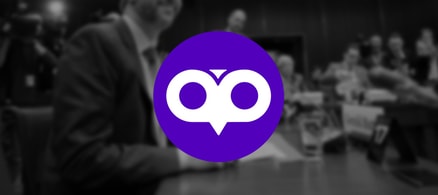Chequing account
For most adults in Canada, day-to-day banking is done through a chequing account. With this account you can have your pay deposited, pay bills, transfer money and, yes, even write cheques. Most financial institutions will typically offer different types of chequing accounts. Premium accounts come with more services such as unlimited transactions, credit card annual fee rebates, and sometimes safety deposit boxes.
The monthly fee is often the biggest concern for consumers. Basic accounts usually have a set number of transactions. Once you go over that limit, you’ll be paying a fee for each additional transaction. The higher-tier accounts come with more options, but they can easily cost you $25 to $30 a month. That said, some banks will waive or reduce the monthly fee if you maintain a minimum balance or have multiple services open.
Eligibility:
- Canadian resident.
- At least the age of majority in the province or territory that you reside.
- Account must be in your name.
- Valid email address (if signing up online).
Maximize Your Tax Refund with TurboTax Canada!
Simplify tax season with this user-friendly software. Get step-by-step guidance, maximize deductions, and file with confidence. Trusted by millions, TurboTax Canada ensures accuracy and peace of mind. Start your taxes today and get the refund you deserve
Get the tax refund you deserveHigh-Interest Savings Account
Every financial institution offers a regular savings account, but these days those don’t pay much interest. You’re better off opening a high-interest savings account (HISA) with an online bank such as EQ Bank, Tangerine or Oaken Financial. Since these banks only operate online, they’re able to pass on the savings to consumers in the form of higher interest rates and no-fee accounts.
HISAs are ideal for short-term savings such as a home down payment or emergency fund. You’re not going to get rich off of the interest, but digital banks do pay significantly more than brick-and-mortar banks. You can even link your HISA to your chequing account. This would allow you to effortlessly move your money between accounts so you can capitalize on the higher interest.
Eligibility:
- Canadian resident.
- At least the age of majority in the province or territory that you reside.
- Valid email address.
- Must have a Social Insurance Number (SIN).
Registered Retirement Savings Plan
A Registered Retirement Savings Plan (RRSP) is the most common type of investing vehicle for savings in Canada. What many people don’t realize is that you don’t buy an RRSP. Your RRSP is an account that allows you to purchase products inside of it such as stocks, mutual funds, bonds and other investments.
Whenever you contribute to your RRSP, your taxable income for the year is reduced by the same amount. This is beneficial because it often means a tax return in the spring. Although you’ll be taxed on withdrawals when you retire, the assumption is that you’ll be in a lower tax bracket at that time, and so pay less taxes on that money than you’d pay today.
Additionally, you can open up an RRSP with your financial institution, an investment firm, or robo-advisor. You can even self-direct your RRSP with an online brokerage.
Eligibility and rules:
- Canadian resident for tax purposes.
- Must have a Social Insurance Number.
- RRSP contribution room is gained after you file your first tax return with income reported.
- RRSP contribution room is based on 18% of your earned income in the previous year.
- There’s an annual RRSP limit (the 2021 limit is $27,830).
- Unused contributions get carried over.
- You can withdraw from your RRSP early without having to pay taxes if the money is being used for the Home Buyers' Plan or Lifelong Learning Plan. These funds need to be repaid eventually or they’ll count as taxable income.
- Contributions can be made until December 31st of the year you turn 71. At that time, you need to convert your RRSP to a Registered Retirement Income Fund (RRIF).
- Once converted to a RRIF, each year you must withdraw a minimum amount of savings, as set by the government.
Grow Your Savings Effortlessly with Moka
Automate your savings with every purchase and watch your money multiply. Moka rounds up your transactions and invests the spare change. Start building wealth effortlessly today. Join thousands of Canadians embracing financial freedom with Moka
Sign up nowTax-Free Savings Account
Although the Tax-Free Savings Account (TFSA) has been around for more than a decade, many people still don’t understand how it works. The confusion comes from the name. Even though it’s called a savings account, you can purchase most investment products within it such as guaranteed investment certificates (GICs), exchange traded funds (ETFs), stocks, and so on.
Unlike RRSPs, there’s no tax break when you contribute to your TFSA. However, any gains made within your TFSA are completely tax-free, regardless of how much your investments have grown. This assumes you’re using your TFSA for personal reasons only.
Eligibility and rules:
- Canadian resident.
- Must have a Social Insurance Number.
- At least the age of majority in the province or territory that you reside.
- Contribution room is set each year by the government. You gain additional room each year from the time you become eligible for a TFSA.
- Unused contribution room gets carried over.
- Withdrawals can only be contributed again the following year, or the same year if you have not exceeded your total contribution limit.
- Investment income including capital gains and interest do not affect your contribution room for the current or future years.
- Your TFSA contribution room can be found in Revenue Canada’s MyCRA portal, but note that this number is typically only updated once a year.
Which accounts should you use?
In an ideal world, you’ll use every account available so you can maximize the benefits of each. That said, you may not have enough cash on hand to max out every account each year. In that case, you should focus on the ones that give you the greatest benefits depending on your needs.
For example, a high income earner might prefer their RRSP since they’ll get an immediate tax break. Younger people who are just starting their careers and are in a low tax bracket may choose to focus on their TFSA.
If you’re not sure which accounts are right for you, take the time to research the different options. Putting your money in the right accounts can make a big difference to your finances in the long run.
Sponsored
Trade Smarter, Today
With CIBC Investor's Edge, kick-start your portfolio with 100 free trades and up to $4,500 cash back.







